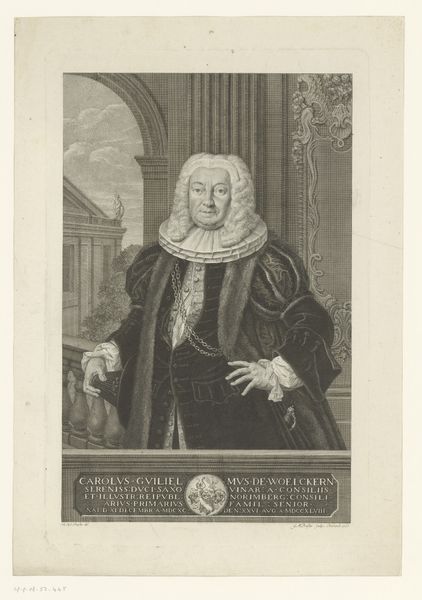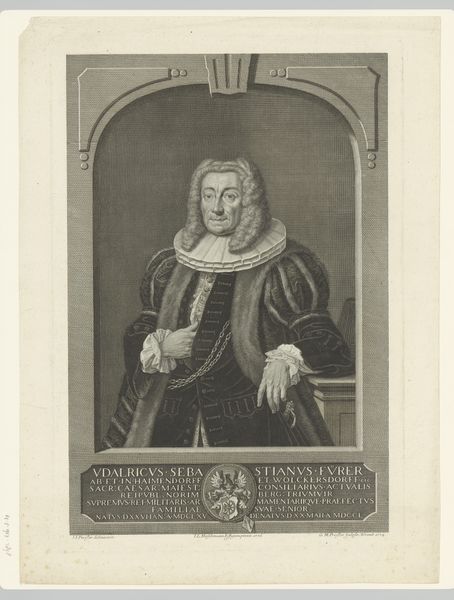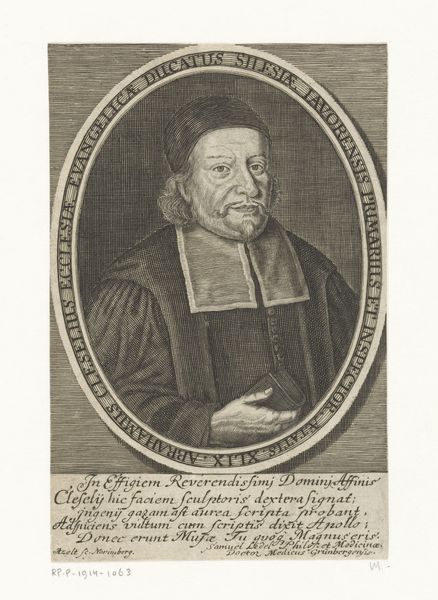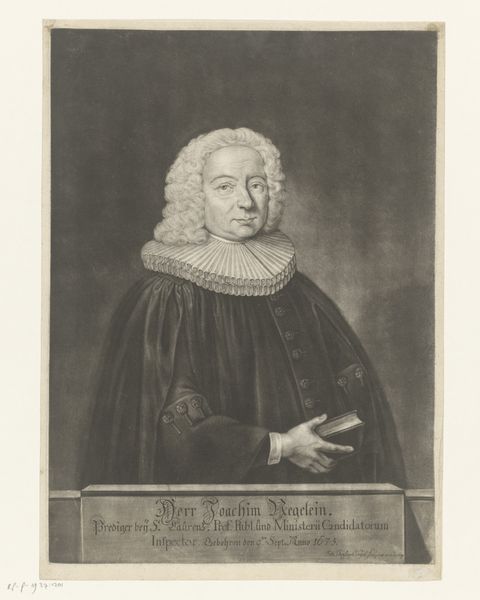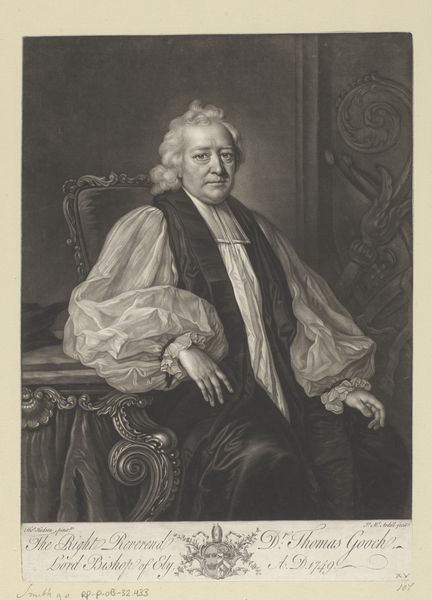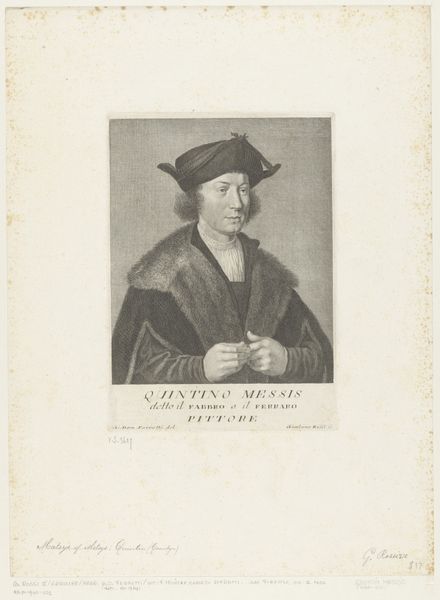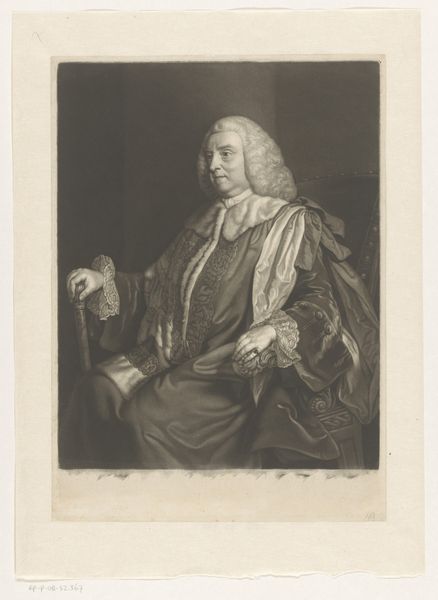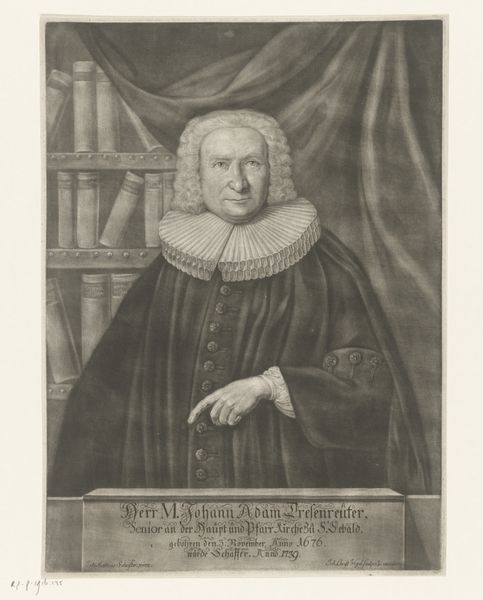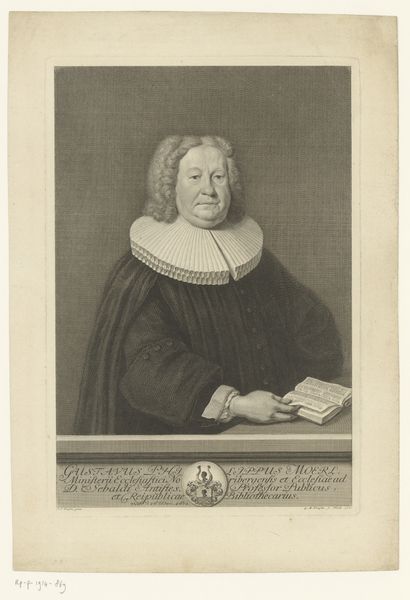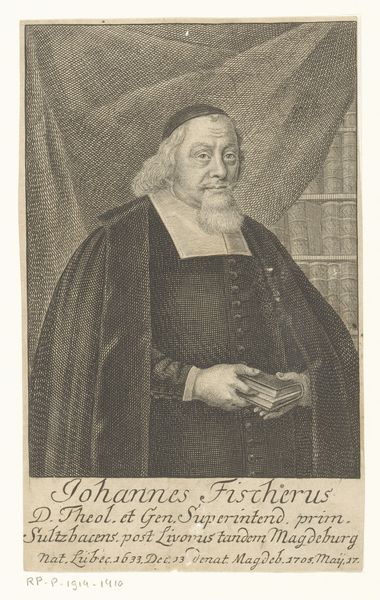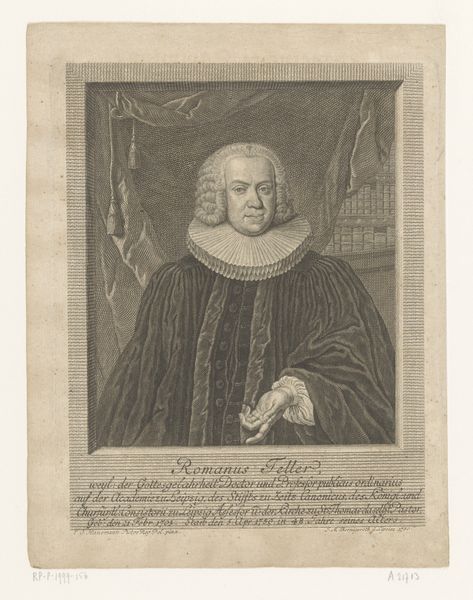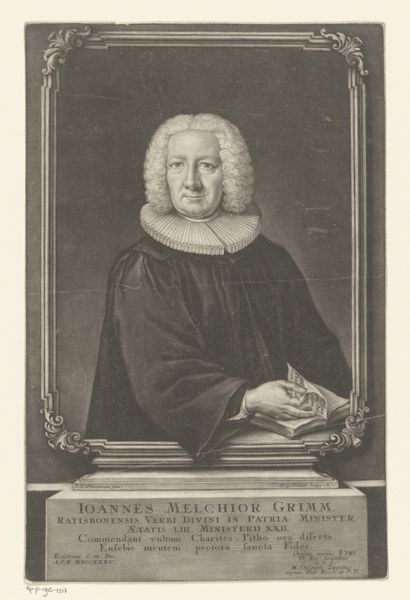
Dimensions: height 420 mm, width 305 mm
Copyright: Rijks Museum: Open Domain
This is James Watson's portrait of William Laud, an etching made in the 18th century. It's all about the way the artist, and his printers, worked to create an image that could be multiplied many times. The lines and textures you see were achieved by drawing into a metal plate with a fine needle, then using acid to bite the lines into the surface. The plate would then be inked and pressed onto paper. This reproductive process democratized the image, making it available to a much wider audience than an original painting. Look closely at the details: the soft gradations of tone in Laud's face, the intricate folds of his robe, the way the light catches the edges of his collar. All of this was carefully rendered through skilled labor, repeated and refined with each print. It's a reminder that even seemingly straightforward images like this one are the product of complex social and economic forces, connecting the artist to a network of artisans and consumers. By appreciating the materials and making of this print, we can better understand its place in the world.
Comments
No comments
Be the first to comment and join the conversation on the ultimate creative platform.
